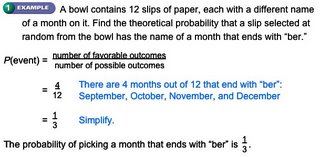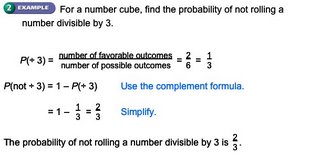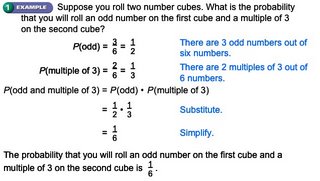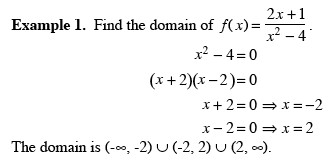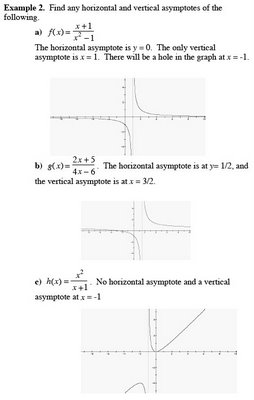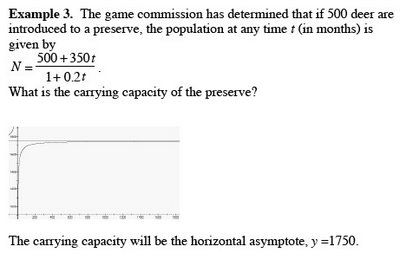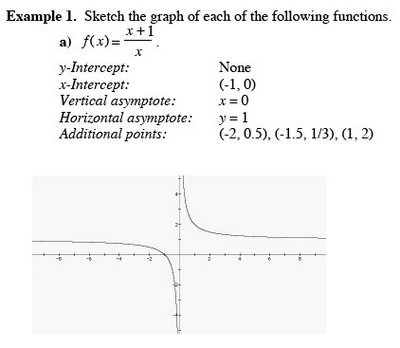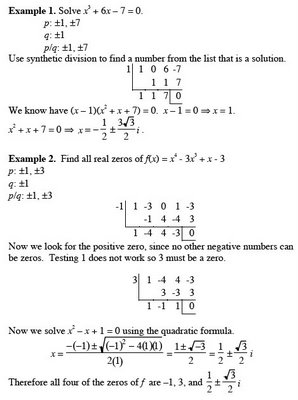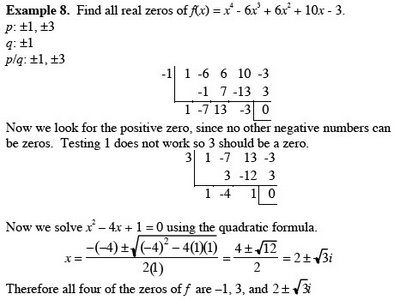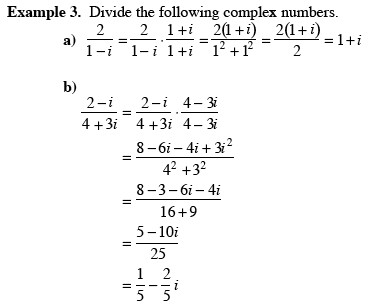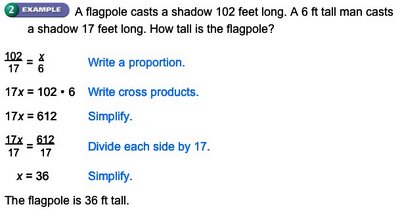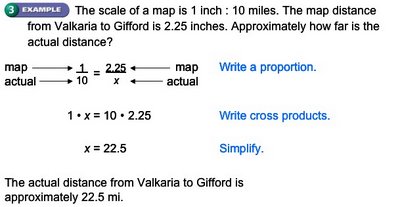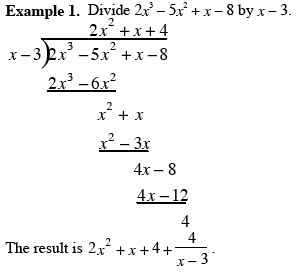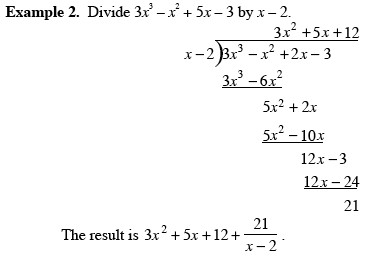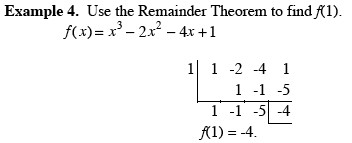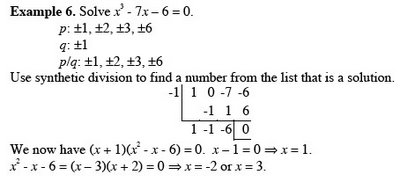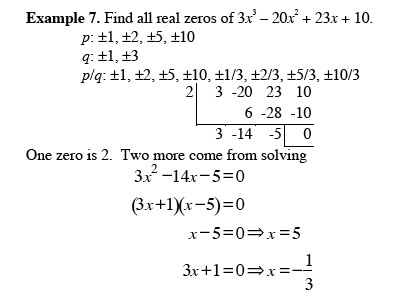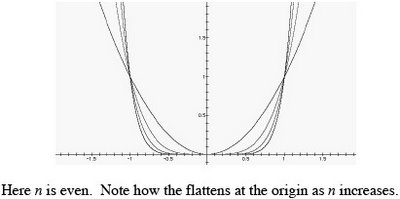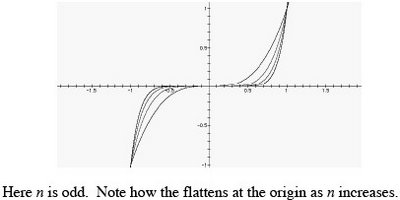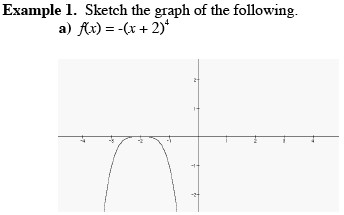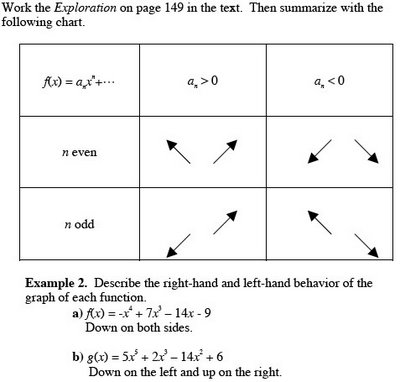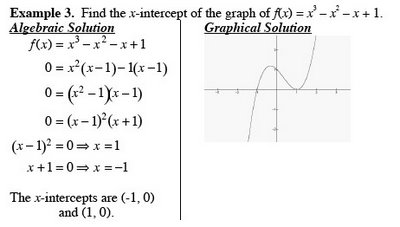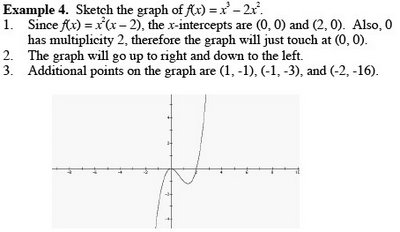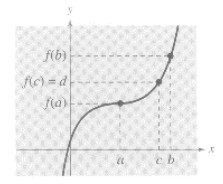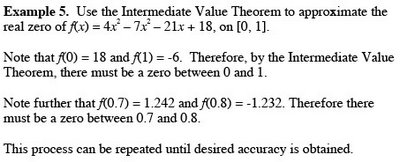Chapter 3 Exponential and Logarithmic FunctionsSection 3.2 Logarithmic Functions and Their Graphs
Objective: Students will know how to recognize, graph and evaluate logarithmic functions.Quickstart3.1 Practice
Determine the balance A at the end of 20 years if $1500 is invested at 6.5% interest and the interest is compounded (a) quarterly and (b) continuously.
LessonII Graphs of Logarithmic Functions
y = log
ax is the inverse of y = a
x and has the following properties
1. The domain is (0, ∞)
2. The range is (-∞, ∞)
3. The x-intercept is (1, 0)
4. The y-axis, x = 0, is a vertical asymptote
5. It is increasing when (a > 0)
Example 3
Sketch the graph of the following on the same coordinate axis.
a) y = log
10x
Vertical asymptote x = 0
x-intercept (1, 0)
Additional point (10, 1)
b) y = log
10(x + 2)
Shift 2 units left from part a
Vertical asymptote x = -2
x-intercept (-1, 0)
Additional point (8, 1)
c) y = log
10(x + 2) - 1
Shift 2 units left and one unit down from part a
Vertical asymptote x = -2
Additional point (-1, -1)
x-intercept (8, 0)
Use graphing utility to verify results.
III. The Natural Logarithmic Function
The logarithmic function with base
e [log
ex] is called the natural logarithmic function and is denoted by ƒ(x) = ln x.
Example 4: Evaluate
a) ln
e5 = 5
b)
eln 3 = 3
c) ln (1 /
e2) = ln
e-2 = -2
Example 5: find the domain of the following function.
ƒ(x) = ln (x + 3)
x + 3 > 0 => x > -3
The domain is (-3, ∞)
IV. Application
Example 7
The model
t = 12.5421 ln[x / (x - 1000)], x > 1000
approximates the length of a home mortgage of $150,000 at 8% in terms of the monthly payment. In the model, t is the length of the mortgage in years and x is the monthly payment in dollars. Find the length of the home mortgage of $150,000 at 8% if the monthly payment is $1300.
t = 12.4421 ln(1300 / 300) ≈ 18.4 years or 18 years and 5 months

This picture is from freeimages.co.uk.
It shows a typical American house. Many people use mortgages to purchase homes. The amount of time it takes to pay off a home can be calculated using a logarithmic function.
3.3 Properties of Logarithms
Objectives: Students will know how to rewrite logarithmic functions with a different base, use properties of logarithms to evaluate, rewrite, and expand expressions.I. Change of Base
Our calculators have only two buttons for logarithmic functions, base 10 [log] and base
e [ln]. To evaluate any other logarithmic functions using a calculator, we must rewrite it in one of these bases using the following formula.
Let a, b, and x be positive real numbers such that a ≠ 1 and b ≠ 1. Then
log
ax = log
bx / log
ba = log x / log a = ln x / ln a
Example 1: Evaluate the following
a) log
518 = ln 18 / ln5 ≈ 1.7959
b) log
242 = log 42/ log 2 ≈ 5.3923
II. Properties of Logartihms
Logarithms are exponents so the following properties are similar to exponent properties.
Let a be a positive real number such that a ≠ 1, let n be a real number, and let u and v be positive real numbers. Then
1. log
a(uv) = log
au + log
av
2. log
a(u/v) = log
au - log
av
3. log
au
n = n log
au
III. Rewriting Logarithmic Expressions
Example 2 Expand the logarithmic expression
a) log(2x
3y
4)
= log2 + logx
3 + logy
4 = log2 + 3logx + 4logy
b) ln [√(x+5) / y
2] = ln√(x+5) - ln y
2 = (1/2) ln(x+5) - 2 ln y
Homeworkp.236 -237
# 3 - 45 x 3's, 47 - 52 all, 54 - 60 x 3's, 73
